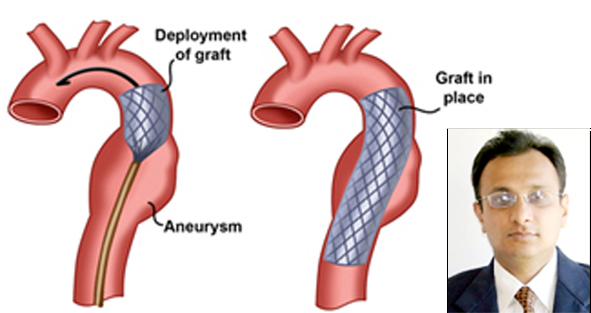Dr Pankaj Goel
Like in all walks f life, science is making rapid progress in the field of cardio-vascular surgery too. Aortic aneurysm is a disease in which the aorta (the largest blood vessel of the body which arises from the heart and carries blood to the whole body) enlarges. Once the aneurysm reaches the size of 6cm it carries a very high risk of rupture.
The treatment of aortic aneurysms is surgery. The affected part is to be isolated from the pressure of the blood circulation so that the risk of rupture is removed. Conventionally this has been done by open surgery. In this technique a full surgical incision is made (10-12inches) and the aneurysm is resected. The aorta is then replaced with an artificial tube graft (fig. below). This is a major operation requiring blood and 10-14 days hospital stay. In the recent past a new technique has been developed which is revolutionising the treatment of this difficult problem. In this technique a stent is covered with a tube graft (covered stent) and introduced into the aneurysm through a small puncture in the artery. This is similar to stenting the arteries of the heart. This procedure can be performed with the patient awake, there is no scar and the patient can be discharged the next day. Although currently this technique is used for selected cases, in the near future it will become the preferred treatment for aortic aneurysms.
In August 2013, we successfully performed the first endovascular repair of an aortic aneurysm in the region.
(The author is Additional Director Cardio-thoracic and Vascular Surgery at Fortis Health care)
Trending Now
E-Paper


